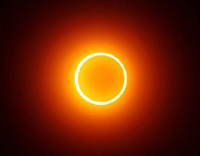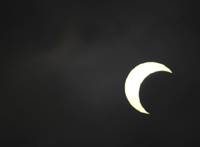 An annular solar eclipse, believed to be the longest in 1,000 years, will occur on January 15 and can be observed in parts of
An annular solar eclipse, believed to be the longest in 1,000 years, will occur on January 15 and can be observed in parts of
 An annular solar eclipse, believed to be the longest in 1,000 years, will occur on January 15 and can be observed in parts of
An annular solar eclipse, believed to be the longest in 1,000 years, will occur on January 15 and can be observed in parts of
The January 15 eclipse will start in Africa and move across the Indian Ocean,
Nguyen Duc Phuong, a member of the Vietnam Astronomy Association, told VNExpress that the solar eclipse will start in Dien Bien and Lai Chau at 2.11pm and in
The strongest affect will be noticed in the northern mountainous
The Indian Ocean will see the most dramatic eclipse while the obscuration in
A solar eclipse occurs when the moon passes between the Sun and the Earth so that the Sun is fully or partially covered. This can only happen during a new moon, when the Sun and Moon are in conjunction from Earth.
At least two and up to five solar eclipses can occur each year on Earth, with up to two of them being total eclipses. Total solar eclipses are nevertheless rare at any location because during each eclipse totality exists only along a narrow corridor in the relatively tiny area of the Moon' + char(39)+ N's umbra.
An annular eclipse occurs when the Sun and Moon are exactly in line, but the apparent size of the Moon is smaller than that of the Sun. Hence the Sun appears as a very bright ring, or annulus, surrounding the outline of the Moon.

 Previous page
Previous page Back to top
Back to top







